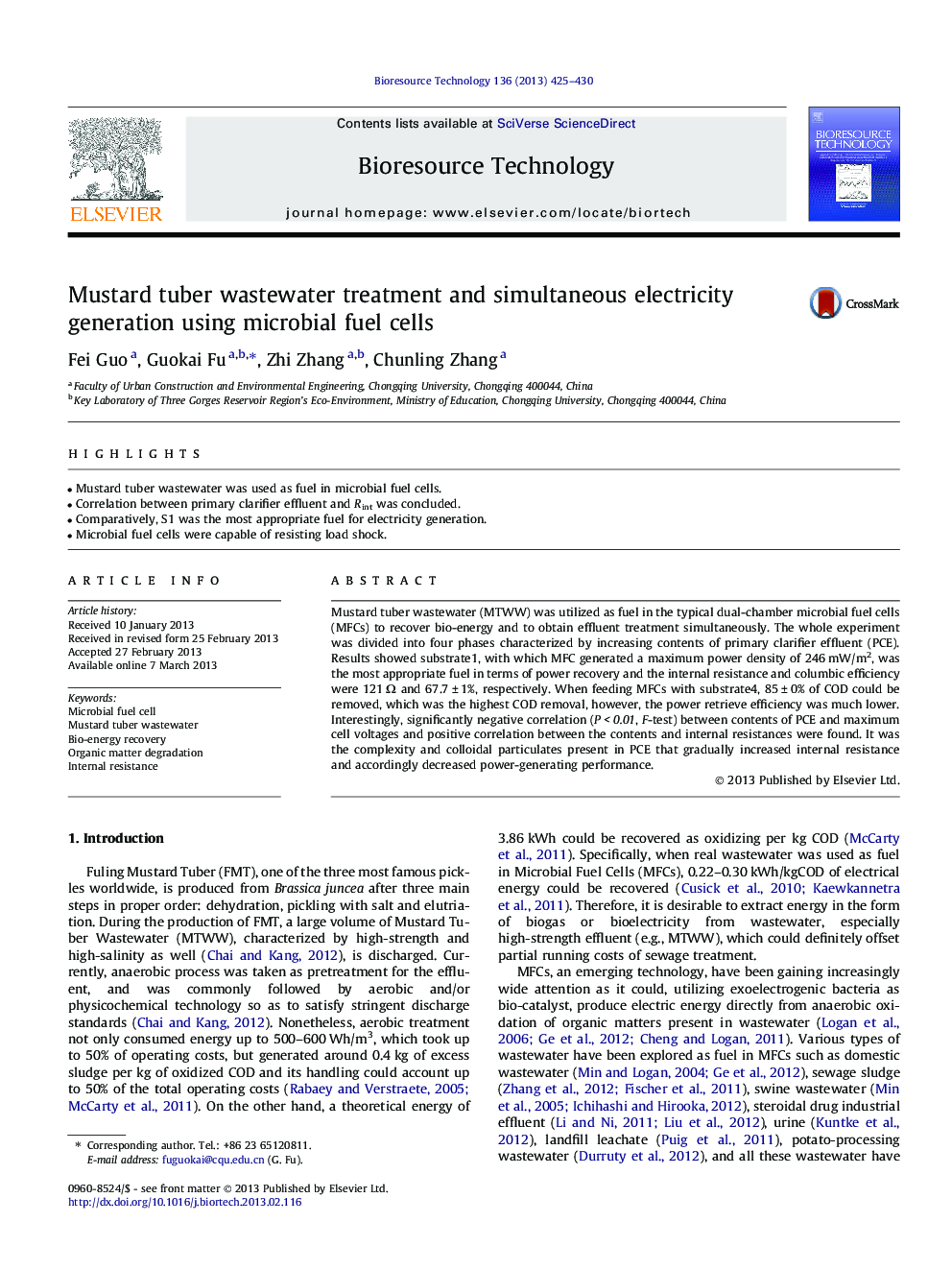| Article ID | Journal | Published Year | Pages | File Type |
|---|---|---|---|---|
| 7083145 | Bioresource Technology | 2013 | 6 Pages |
Abstract
Mustard tuber wastewater (MTWW) was utilized as fuel in the typical dual-chamber microbial fuel cells (MFCs) to recover bio-energy and to obtain effluent treatment simultaneously. The whole experiment was divided into four phases characterized by increasing contents of primary clarifier effluent (PCE). Results showed substrate1, with which MFC generated a maximum power density of 246 mW/m2, was the most appropriate fuel in terms of power recovery and the internal resistance and columbic efficiency were 121 Ω and 67.7 ± 1%, respectively. When feeding MFCs with substrate4, 85 ± 0% of COD could be removed, which was the highest COD removal, however, the power retrieve efficiency was much lower. Interestingly, significantly negative correlation (P < 0.01, F-test) between contents of PCE and maximum cell voltages and positive correlation between the contents and internal resistances were found. It was the complexity and colloidal particulates present in PCE that gradually increased internal resistance and accordingly decreased power-generating performance.
Related Topics
Physical Sciences and Engineering
Chemical Engineering
Process Chemistry and Technology
Authors
Fei Guo, Guokai Fu, Zhi Zhang, Chunling Zhang,
